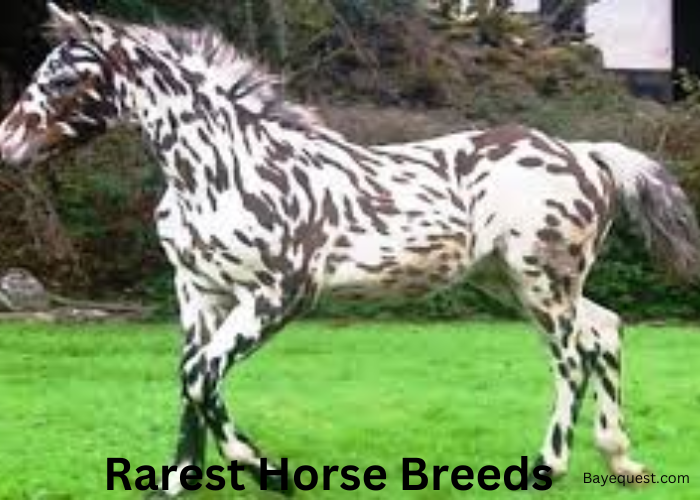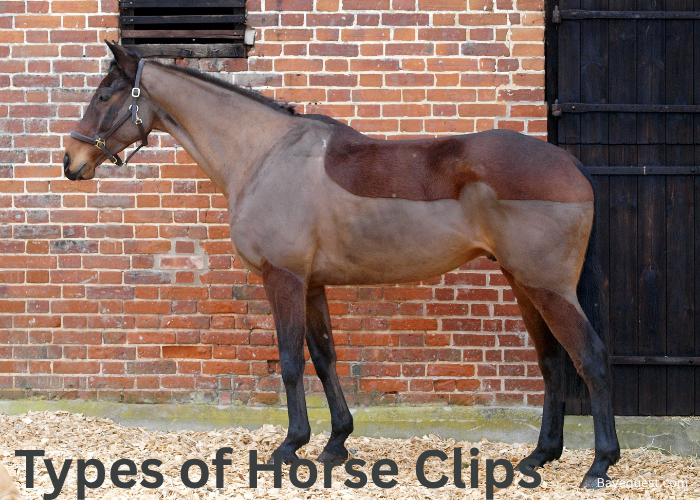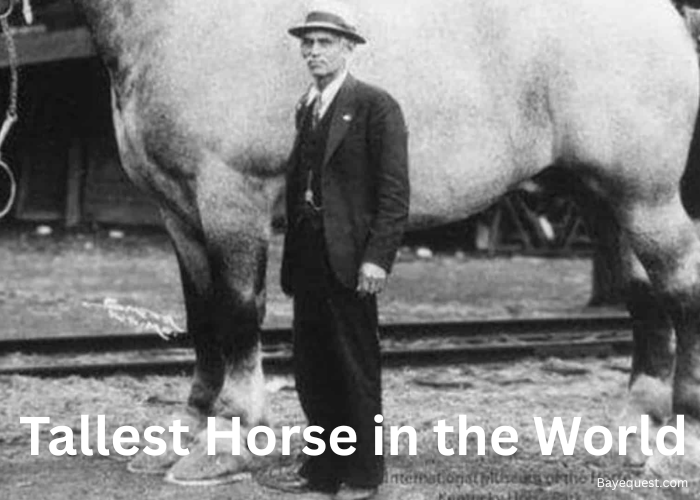Some horses are more than just rare—they’re legends in their own right. With unique traits and fascinating histories, these breeds stand apart.
Few are lucky enough to encounter them, and their rarity only adds to their allure.
From ancient bloodlines to striking appearances, each of these horses holds a special place in the equine world.
Let’s uncover what makes them so extraordinary.
What is the Rarest Horse Breed in the World?: Key Takeaway
The Falabella is the rarest horse breed in the world. Originating in Argentina, this tiny horse stands under 34 inches tall and is cherished for its unique size, strength, and friendly nature. Its rarity and versatility make it a sought-after companion, often used in therapy and admired for its beauty.
What Defines a Rare Horse Breed?
So, what makes a horse breed rare? It’s not just about being hard to find. It’s about numbers, history, and sometimes mystery.
Imagine a horse you don’t see every day. Maybe there are only a few hundred left in the world.
Or, it’s a breed that almost disappeared before people stepped in to save it.
Sometimes, it’s a breed tied to a specific place or culture. Rare breeds might have unique traits you won’t find anywhere else. It could be their looks, history, or special skills.
In short, a rare horse breed is precious, unusual, and often at risk of fading away. That’s what makes them so fascinating.
The Difference Between Endangered and Rare Breed Horses
Let’s clear up the difference between rare and endangered horses.
Think of it this way: rare horses are like hidden treasures. They’re few, but they’re not necessarily in trouble.
You won’t see them often, but they have a stable population.
On the other hand, endangered horses are in a pickle. Their numbers are so low that they could vanish if we’re not careful. Being endangered means they need urgent help to survive.
So, while all endangered horses are rare, not all rare horses are endangered. It’s about how close they are to disappearing.
Rare is special. Endangered is a call to action.
See also: Rare Horse Colors.
Rarest Horse Breeds in the World
The following are the world’s rarest horse breeds each with its unique traits:
1. Fallabella horse
The Falabella is the rarest horses in the world. Originating in Argentina, this unique breed was developed by the Falabella family in the mid-1800s.
Standing under 34 inches tall, these tiny horses are admired for their big hearts and surprising strength. Despite their small size, they carry the sturdy build of larger horses.
Falabellas come in various colors and patterns, making each one unique. Their compact size suits small spaces, and they’re often cherished as companion animals.
They are friendly and intelligent and can be trained to pull small carts or assist in equine therapy.
Their rarity, gentle nature, and manageable size make them truly extraordinary.
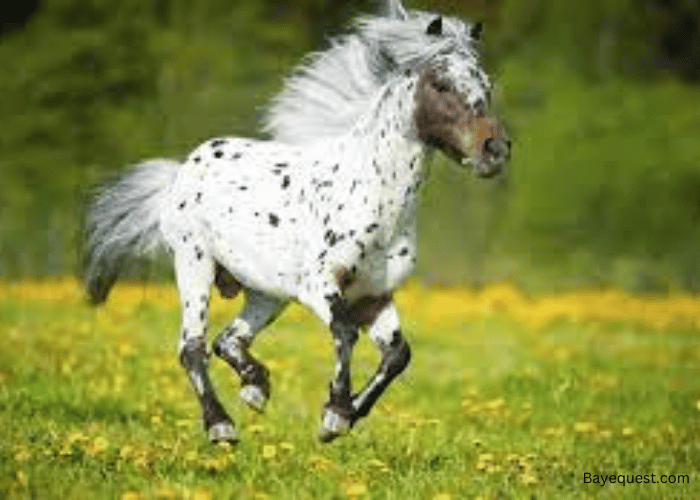
2. Caspian horse
Step back into ancient Persia to meet the Caspian horse. This breed, thought to have been lost for centuries, was rediscovered in the 1960s by American horsewoman Louise Firouz.
Caspians are small, standing around 10 to 12 hands high, but don’t let their size fool you—they’re agile and elegant. They have a refined, almost dainty appearance, slim build, and fine bones.
Known for their endurance and speed, Caspians were once used in royal chariots. Today, they’re valued for their versatility in equestrian sports and unique history.
They’re gentle with children and quick learners, making them perfect for riding and driving.
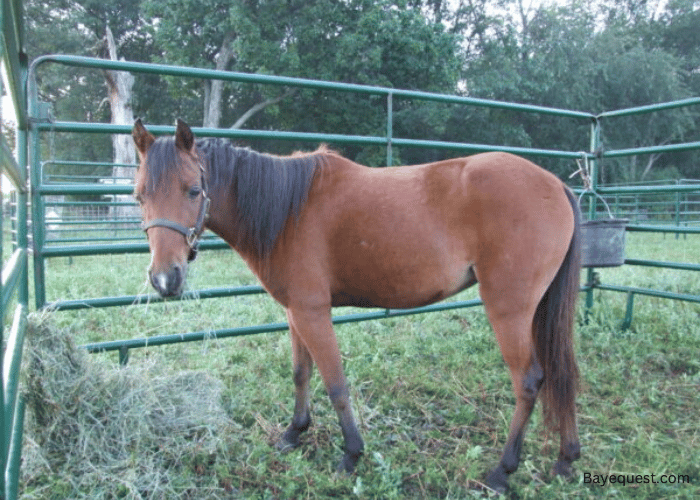
3. The Marwari horse
Travel to India, and you’ll find the majestic Marwari. With its inward-turning ears, this horse looks like it belongs in a royal palace—and it did.
The Marwari has deep roots in the history of Indian nobility. For centuries, the Rathores, a Rajput clan, bred them.
Standing about 14 to 16 hands high, they have a high spirit of endurance, bravery, and distinctive appearance.
Their unique ears, which can turn almost 180 degrees, are their signature feature. Marwaris are loyal and often form strong bonds with their riders.
They’re still used in traditional Indian ceremonies and have a growing presence in equestrian sports.
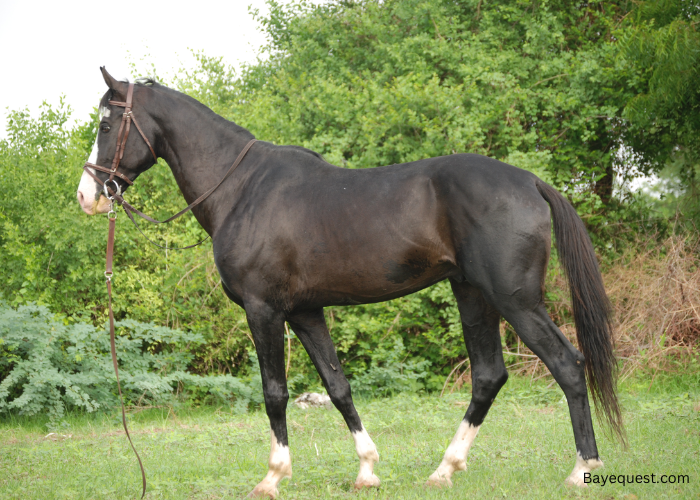
4. Norwegian Fjord horse
Imagine a horse straight out of a Viking saga—the Norwegian Fjord horse.
Originating in Norway, this breed is one of the oldest and purest in the world, with roots going back over a thousand years.
Fjords have a sturdy build, standing around 13 to 14 hands high, and their distinctive dun color with a black stripe down their back.
Their calm, gentle nature makes them excellent for both work and pleasure.
Fjords are incredibly versatile; they can plow fields, pull carts, or carry riders. Their distinctive looks and reliable temperament have made them popular for everything.
Read more on the history and origin of the Norwegian Fjord Horse in our blog.
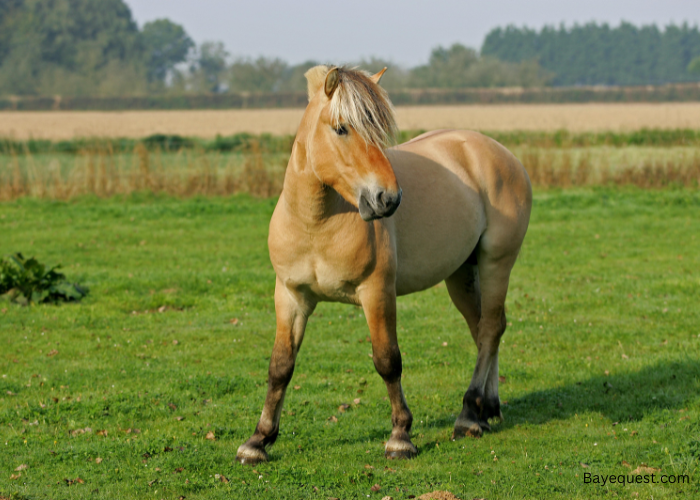
5. Gypsy Vanner horse
If you’ve ever dreamed of a fairy-tale horse, the Gypsy Vanner is it. Originating from the Romani people of Britain and Ireland, this breed was developed to pull caravans and be a family horse.
Known for their striking appearance, they have a long, flowing mane and tail, and feathering on their legs.
They stand around 14 to 15 hands high and come in various colors, often with striking patterns.
Gypsy Vanners are not just beautiful. They’re also gentle and friendly, making them great for families and first-time horse owners.
They’re versatile, too, excelling in everything from driving to dressage.
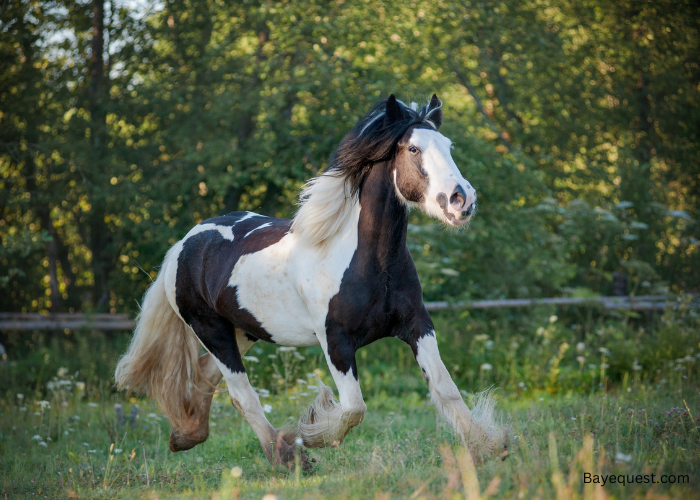
6. Curly Horse
Meet the Curly horse, a breed with a twist—literally. It has a unique curly coat, ranging from slight waves to tight curls, these horses stand out in any crowd.
Curlies come in all sizes and colors. They have hypoallergenic qualities, making them a great choice for people with allergies.
Their origins are a bit of a mystery, with theories ranging from North American wild horses to European imports.
Curly horses also have a hardy and friendly disposition making them excel in various disciplines.
Truly, their unique coat and gentle personality make them one-of-a-kind.
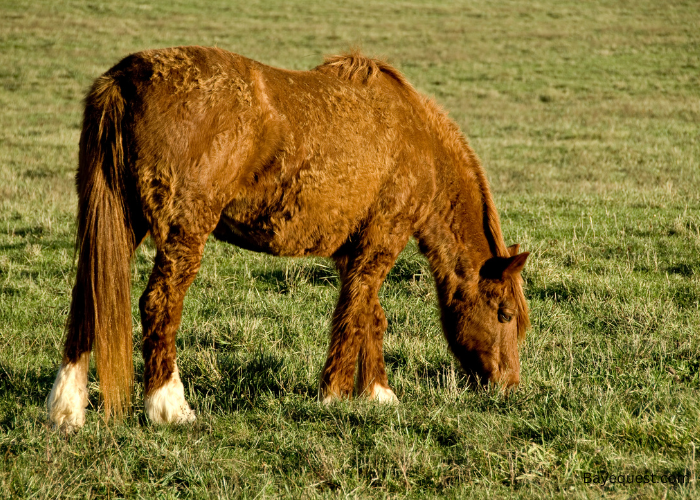
7. Suffolk Punch
Big, red, and ready to work—the Suffolk Punch is a draft horse from England with a history as rich as its chestnut coat. This breed dates back to the 16th century and has a solid, muscular build.
Standing about 16 to 18 hands high, they were bred for farm work and have a reputation for their strength and stamina.
Suffolk Punches are easy to recognize by their broad bodies and short legs.
They’re efficient workers, calm, and have a willing nature. This makes them excellent for both agricultural work and modern competitions in pulling and driving.
Their easygoing temperament also makes them a good fit for beginners.
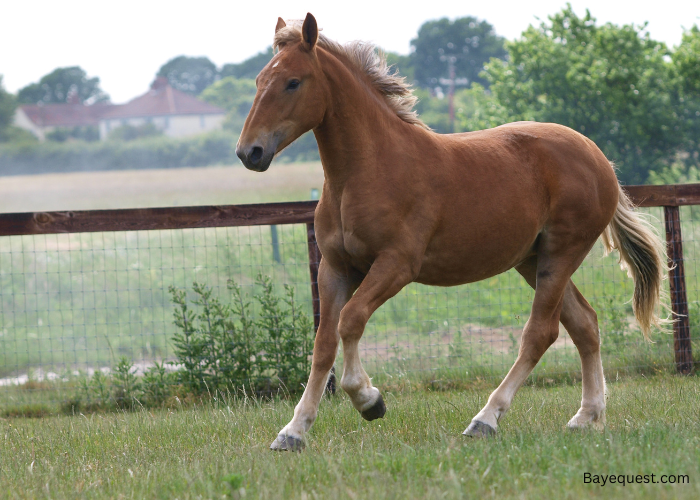
8. Pintabian horse
Blend the best of two worlds with the Pintabian horse. This breed combines the elegance of the Arabian with the striking pinto coat pattern.
Pintabians are new, having been developed in the late 20th century in the United States.
They stand around 14 to 15 hands high and have a refined, graceful build and flashy appearance.
Pintabians are primarily white with patches of color, which makes them stand out in any setting.
They have the endurance and spirited nature of the Arabian, coupled with a friendly disposition.
This makes them ideal for riding and showing, especially for those who love a horse that catches the eye.
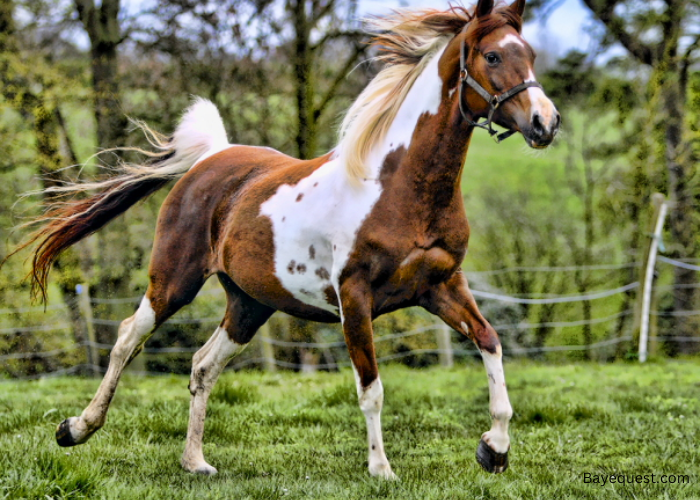
9. The Canadian horse
The Canadian horse, often called “the little iron horse,” hails from Canada and has been around since the 17th century.
French settlers originally brought over these horses, and have since developed into a distinct breed.
Canadian horses are versatile, strong, and resilient. They stand about 14 to 16 hands high and have a compact, muscular build.
They’re dark in color—black, bay, or brown—and have a calm, easygoing nature.
Canadians excel in various disciplines, from driving and farm work to riding and competitive sports.
Their adaptability and strong work ethic make them a treasured part of Canadian heritage.
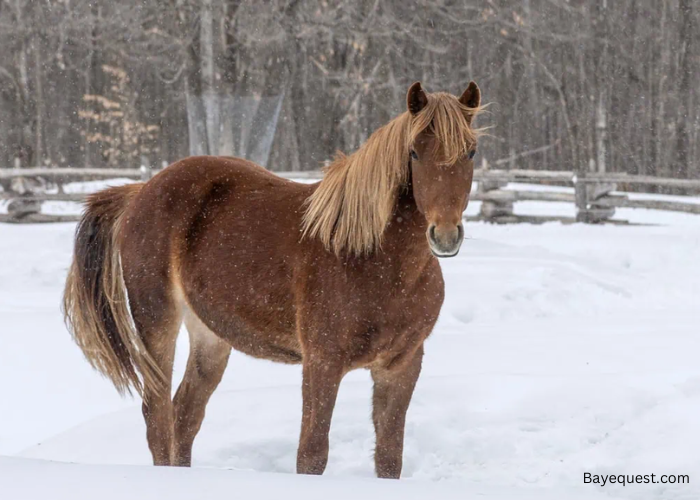
10. Akhal-Teke horse
Meet the Akhal-Teke, a breed with a coat that gleams like metal. Hailing from Turkmenistan, this ancient breed is one of the oldest in the world.
Known as the “Golden Horse,” they’re famous for their metallic sheen and endurance.
Akhal-Tekes stand about 14 to 16 hands high and have a slim, athletic build. They’re celebrated for their speed, stamina, and resilience, traits that made them prized by nomadic tribes.
Their unique appearance and incredible physical capabilities make them a standout among horse breeds.
Whether it’s their shimmering coats or their ability to endure harsh climates, Akhal-Tekes are truly one of a kind.
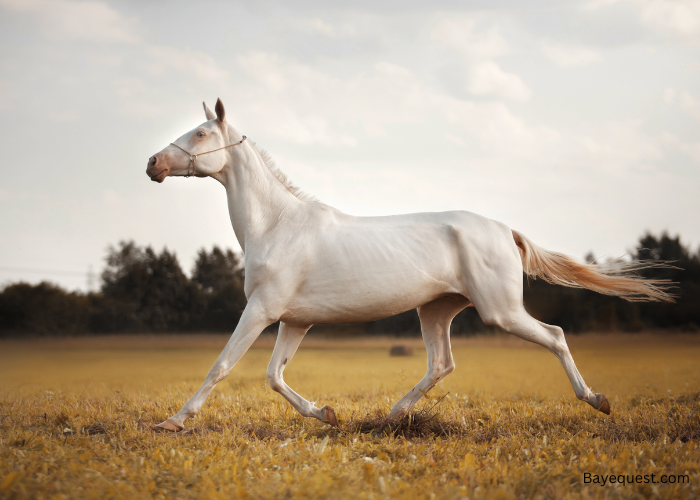
11. Dales Pony
The Dales Pony comes from the rugged hills of Northern England, developed for working in the lead mines and farming.
They’re sturdy, standing around 14 hands high, with a strong build and plenty of endurance.
Their typical colors are black, bay, and sometimes grey, with a thick mane and tail. Dales Ponies are so strong and versatile.
They’re great for riding and driving and excel in endurance events. Their calm temperament and friendly nature make them ideal for families and competitive riders alike.
Their resilience and versatility are what set them apart.
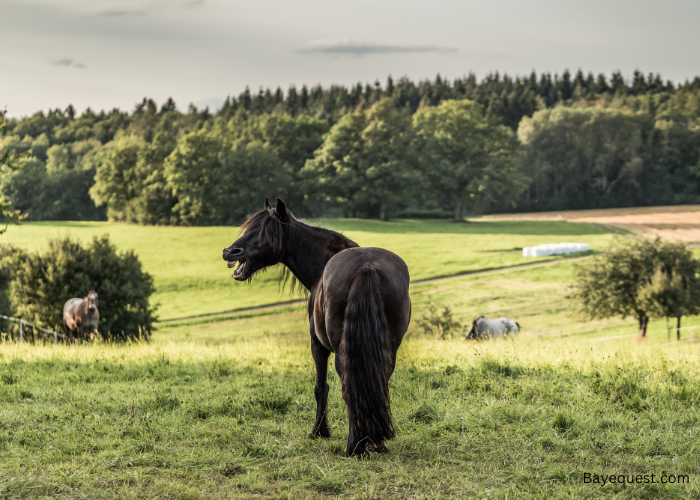
12. The Cleveland Bay Horse
The Cleveland Bay is one of England’s oldest breeds, dating back to the 17th century.
Originating in Yorkshire, these horses were used for everything from agriculture to pulling carriages.
Standing around 16 to 17 hands high, Cleveland Bays are solid bay color, have no markings, and have a muscular build.
They are great at heavy work and riding because they are known for their strength and stamina.
They are calm, hardworking, and reliable in various roles. Their elegance and power make them favorites in traditional equestrian sports and historical reenactments.
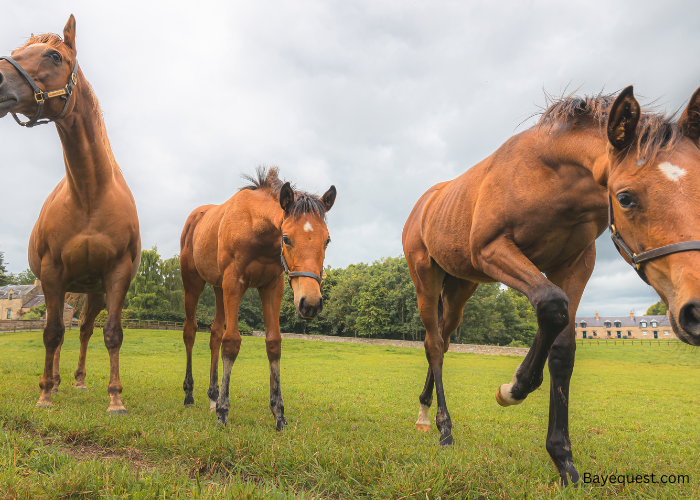
13. Newfoundland Pony
Hailing from the rocky coastlines of Newfoundland, Canada, the Newfoundland Pony is a hardy and versatile breed.
Developed by settlers in the 17th and 18th centuries, these ponies were used for farm work, hauling wood, and riding.
They’re small, standing around 11 to 14 hands high, and come in various colors. Newfoundland Ponies are true survivors known for their strength, intelligence, and friendly disposition.
They’re a rare breed today, and conservation efforts are in place to protect them. Their ability to adapt to harsh climates and gentle nature make them beloved in their native region and beyond.
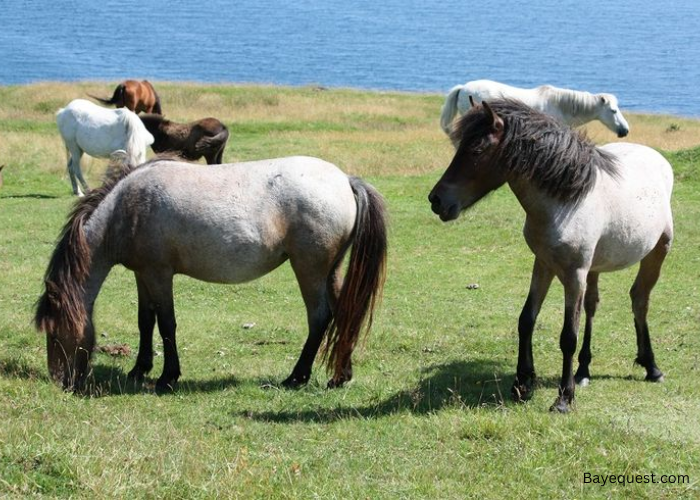
14. The American Cream Horse
The American Cream Draft Horse is a true American original, developed in the early 20th century in Iowa.
They have a distinctive cream-colored coat and amber eyes, these horses stand around 15 to 16 hands high.
American Creams have a muscular build, ideal for draft work. They also have a gentle temperament and are always willing to work.
They were bred to be versatile and used in both farming and light work.
Today, they’re rare, with conservation efforts focused on preserving their unique characteristics.
Their striking appearance and calm nature make them stand out in the draft horse world.
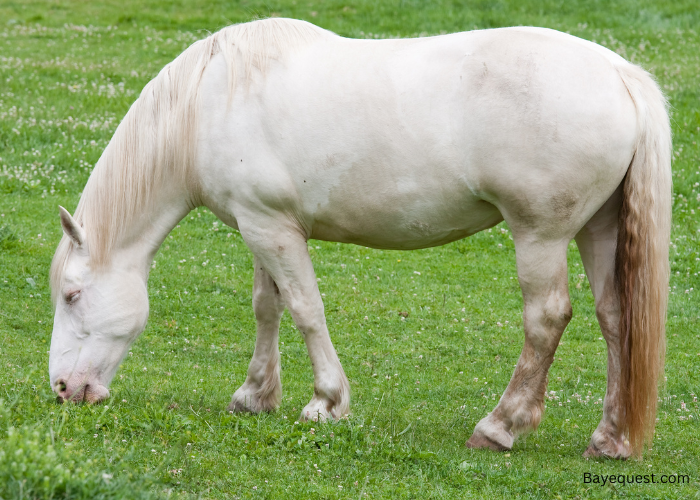
15. Eriskay Pony
The Eriskay Pony is one of the last surviving native ponies from the Hebridean islands of Scotland.
These small ponies, standing around 12 hands high, have a dense coat that protects them from the harsh weather of their homeland.
They’re usually grey, though some are bay or black. Known for their hardiness and friendly nature, Eriskays were used for crofting, light draft work, and as children’s ponies.
They’re an ancient breed with a history intertwined with the islanders’ lives. Their resilience and gentle temperament make them cherished companions.
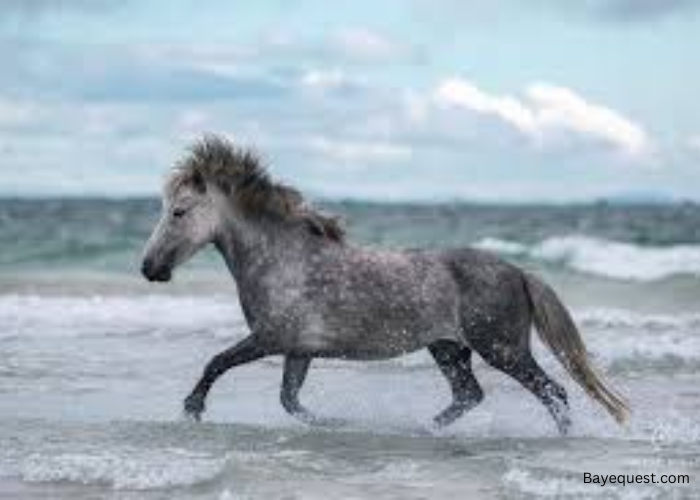
16. The Hackney Horse
The Hackney Horse, admired for its high-stepping action, originated in England in the 18th century. These horses stand around 14 to 16 hands high and are often bay, brown, or chestnut.
Hackneys display a lively trot and elegant movement, making them popular in carriage driving and show rings. They have a refined build, a graceful neck, and powerful legs.
Their spirited yet manageable nature makes them favorites for driving competitions and parades.
Flashy action and a refined appearance distinguish them from other breeds.
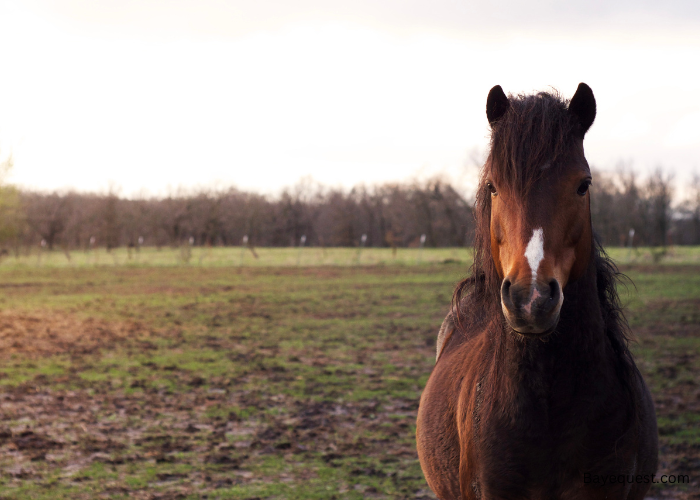
17. Highland Pony
The Highland Pony is valued for its strength and versatility, hails from Scotland’s highlands and islands.
Standing around 13 to 14 hands high, these ponies feature a dense coat and a compact build.
They come in a variety of colors, including grey, bay, and dun. Traditionally, Highland Ponies served as farm workers and riding ponies.
Renowned for their hardiness, they excel in tough conditions. Their calm and friendly nature makes them ideal for work and family riding.
They are cherished for their resilience and adaptability.
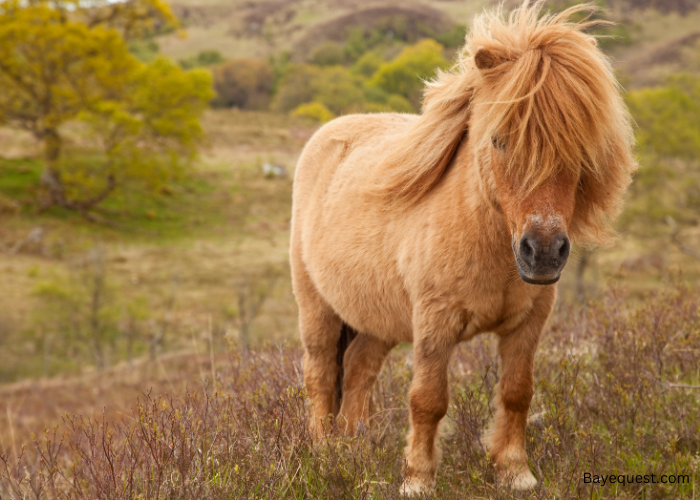
18. The Shire Horse
The Shire Horse is a giant among horses, hailing from England and known for its immense size and strength.
Standing up to 18 hands high, Shires have a solid build and often come in black, bay, or grey.
They’re used for heavy draft work and have a gentle disposition and willingness to work. Shires have a history of pulling heavy loads, from farm equipment to brewery wagons.
Despite their size, they’re calm and friendly. Their power and presence make them impressive in parades and competitions.
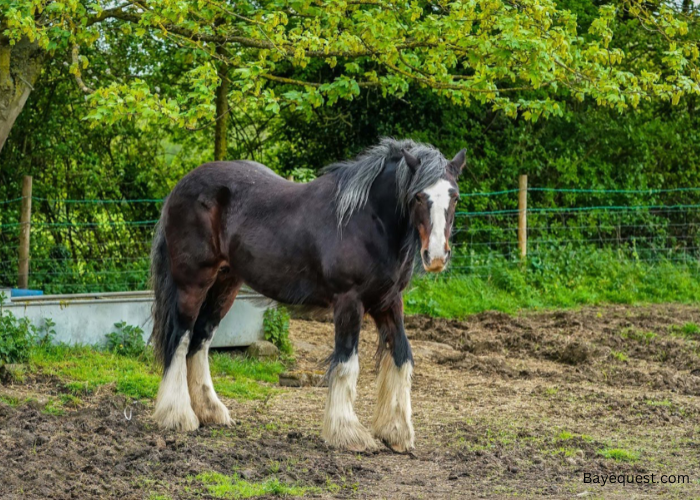
19. Galiceno horse
The Galiceño horse, brought to the Americas by Spanish explorers, is a small, agile breed.
Standing around 12 to 13 hands high, these horses have a compact, sturdy build and often come in bay, black, or chestnut.
Known for their endurance and intelligence, Galiceños were used for herding and riding. They’re quick and agile, making them ideal for various equestrian activities.
Their gentle nature and adaptability make them great for families and working environments.
Today, they’re rare, with efforts underway to preserve their unique qualities.
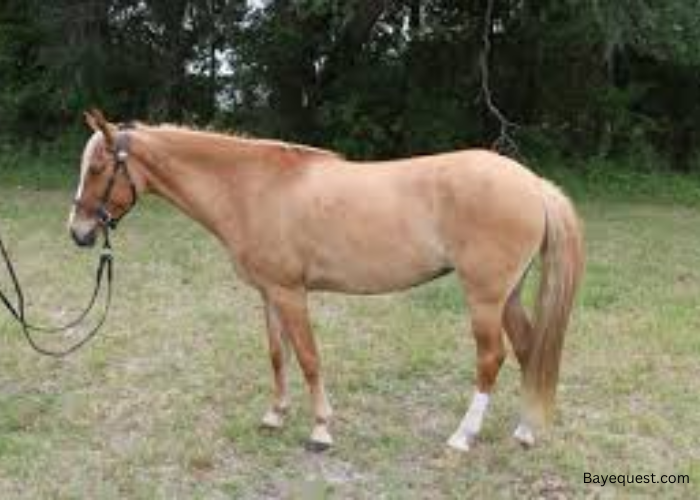
20. Sorraia
The Sorraia horse, from the Iberian Peninsula, is one of the oldest and most primitive horse breeds.
Standing around 14 hands high, these horses have a distinct dun or grulla color with primitive markings like a dorsal stripe and zebra-like leg stripes.
Known for their hardiness and resilience, Sorraias were used by Portuguese herders. They’re agile, tough, and capable of surviving in harsh environments.
Their primitive appearance and historical significance make them a living link to the ancient horses of Europe.
Conservation efforts are focused on preserving their unique characteristics.
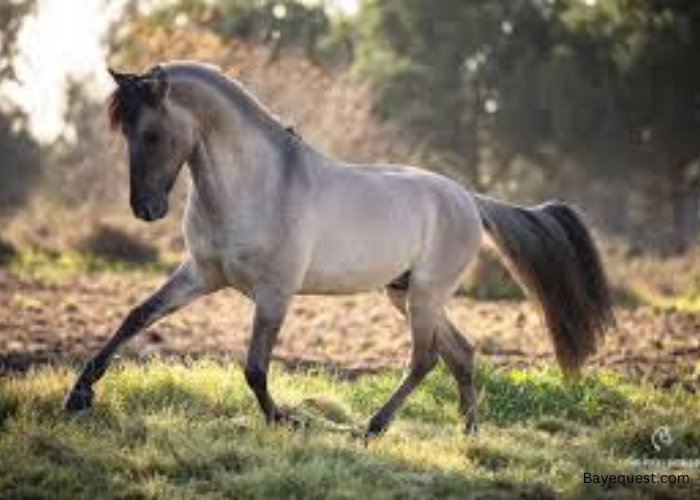
21. Banker horse
The Banker Horse roams the Outer Banks of North Carolina and is one of the last wild horse populations in the United States.
Standing around 13 to 14 hands high, these small horses have a hardy build and often come in bay, chestnut, or black.
Known for their resilience, Bankers have adapted to the harsh coastal environment, surviving on sea oats and fresh water from temporary pools.
They’re believed to be descendants of Spanish horses brought over by explorers and shipwrecks.
Efforts to protect their habitat are crucial to their survival. Their wild spirit and adaptation to coastal life make them unique.
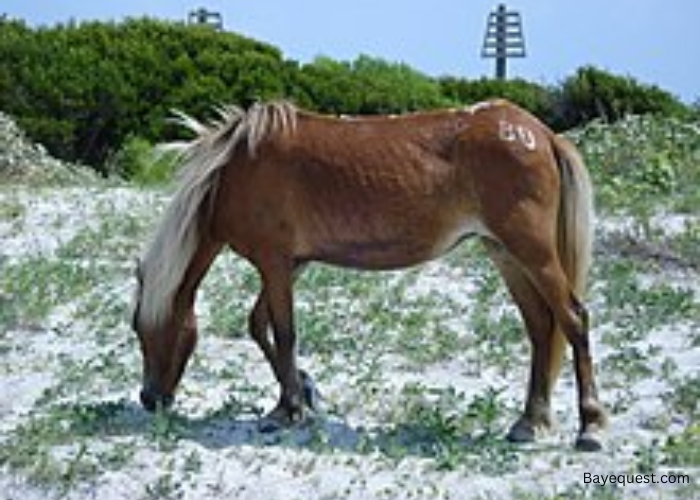
22. Exmoor Pony
The Exmoor Pony, native to the British Isles, is one of the oldest and purest pony breeds.
Standing around 12 to 13 hands high, these ponies have a robust build and a dense coat, perfect for their native moorland climate.
They’re typically bay or brown with a distinctive “toad” eye, a fleshy hooded structure that protects their eyes from harsh weather.
Exmoors have survived harsh conditions for centuries. They’re used for conservation grazing, riding, and driving.
Their ancient lineage and ability to thrive in tough environments make them a treasured breed.
Interesting read: Strong horse breeds in the world.
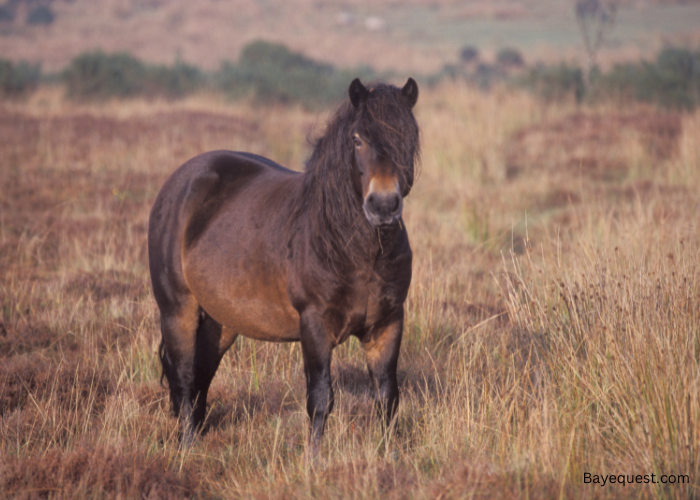
FAQs
What is the rarest horse breed?
The Falabella horse is often considered the rarest. These miniature horses from Argentina are tiny but mighty, standing less than 34 inches tall. Their scarcity, unique size, and friendly nature make them a rare gem in the equine world.
What horse breeds almost went extinct?
Several breeds have come close to extinction. The Caspian horse was thought to be extinct until its rediscovery in the 1960s. The Cleveland Bay and the American Cream Draft have also faced critical low numbers. Dedicated conservation efforts have helped these breeds bounce back from the brink.
How can we save the rarest horse breeds from extinction?
To save rare horse breeds, support breeding programs and conservation initiatives. Educate others about the importance of genetic diversity and the history of these breeds. Supporting breed associations, adopting or sponsoring rare horses, and promoting their use in equestrian activities can also make a difference.
Are there any extinct horse breeds?
Yes, there are extinct horse breeds. One notable example is the Tarpan, a wild horse from Europe that became extinct in the late 19th century. Efforts have been made to recreate the Tarpan’s characteristics through selective breeding, but the original breed itself no longer exists.
Conclusion
And there you have it—the rarest horses in the world, each a unique piece of living history.
From the shimmering Akhal-Teke to the ancient Exmoor Pony, these breeds showcase the beauty and diversity of the equine world.
Saving them from extinction helps preserve our shared past.
So, if you spot one of these rare gems, take a moment to appreciate their wonder and the stories they carry.




